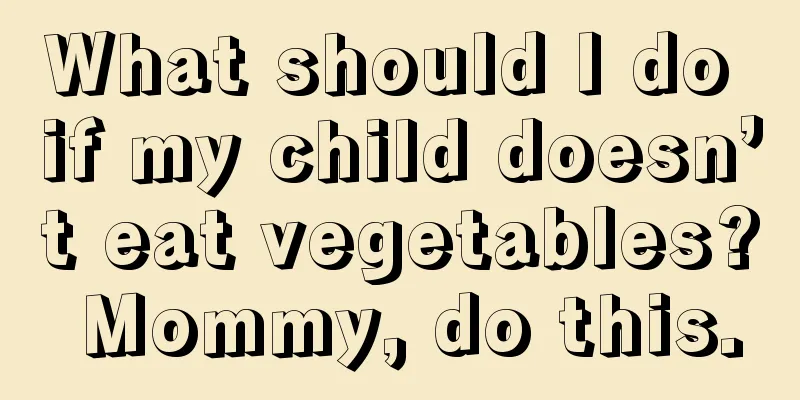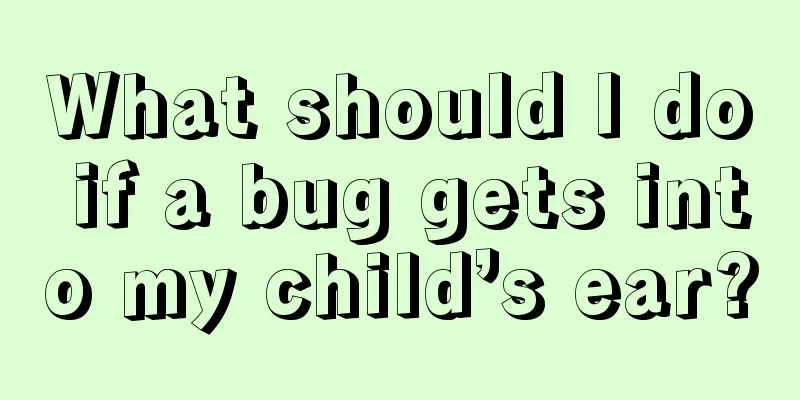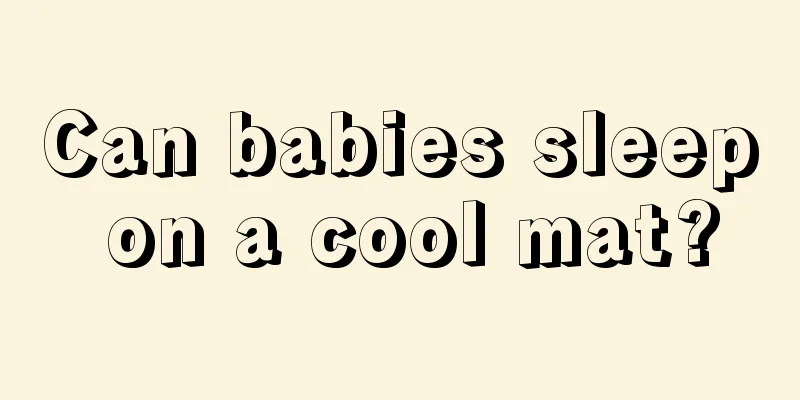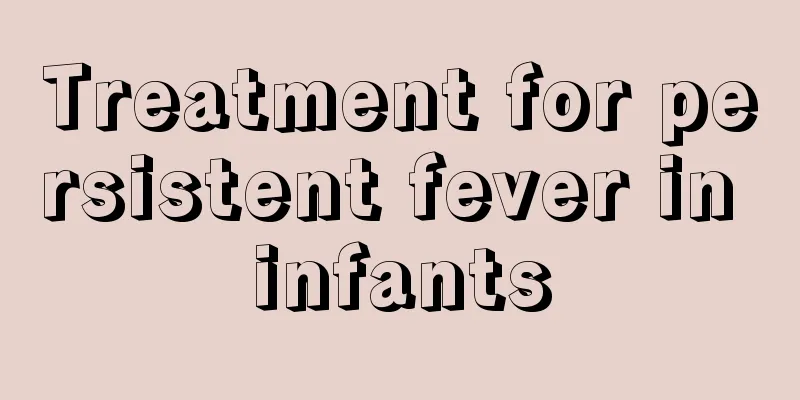Treatment for a baby with one big eye and one small eye
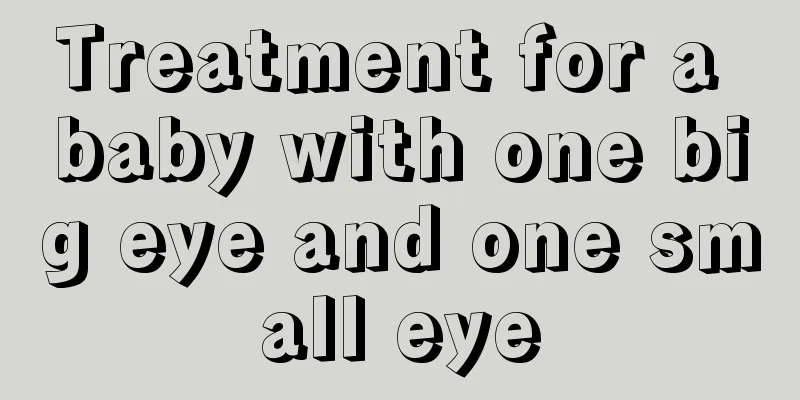
|
When a baby has one big eye and one small eye, our parents often don’t know what to do. This situation is different from other diseases, which can be treated with the right medicine. However, many parents don’t understand why, so the treatment becomes naturally difficult. The baby has brought a great impact on our entire family, so our parents want to treat the baby’s eye problem as soon as possible. So, what are some good ways to treat the baby’s eye condition? Let us follow the article to learn about the treatment method for a baby with one big eye and one small eye. method: 1. Limit or offset near vision and improve eye sensitivity 1. Limit the time, distance, lighting, posture, etc. for students to read, watch TV, or use computers, and allow them to take a 5-10 minute break every 30 minutes or so. However, this method is not very reliable, because modern students cannot do without reading, using computers, etc., and the time they spend "looking close" is increasing. Therefore, it is preferred to use a farsighted lens to offset the nearsighted reflection and to virtualize reading and writing into a farsighted rest. The more students read and write, the better their eyes rest and the less likely they are to develop myopia. 2. Frequent eye movement or far-sighted-near-eye movement exercises (such as playing table tennis) can improve the sensitivity of eye muscle movement, but it is difficult for students to do it accurately or persist for a long time. Therefore, it is best to use a microcomputer-controlled sensitive mirror, which can be done very standardly and is easy to persist for a long time. 2 (II) Reasonable glasses Preventing blurry eyes and lengthening of the eye axis caused by squinting: Blurred eyes will occur when looking at distant objects without glasses, which can induce chemical changes in the eye and cause lengthening of the eye axis; squinting can lengthen the eye axis, both of which can cause the occurrence and development of myopia. Children with myopia of more than 50 degrees should wear glasses. If they do not wear glasses, they will not be able to see distant objects clearly or will squint, which may cause the eyeball to become longer or cause changes in myopia-related factors and accelerate the development of myopia. For those below 250 degrees, they should only be worn when looking far away or at the blackboard. They do not need to be worn at ordinary times or when reading (because they can see clearly at close range but blurry at far distance). For those above 250 degrees, they should be worn all day (if they are worn sometimes and not worn sometimes, the frequent blurriness may cause the eye axis to lengthen and cause progression). 3 (III) Myopia control device: In principle, a myopia device of the second generation or above should be used to control two key aspects of myopia: near vision reflex and decreased eye sensitivity. There are more than 30 kinds of myopia devices in China. However, according to the working principle, there are only four categories (i.e. four generations): The first generation of myopia devices (using physical methods to indirectly act on the eyeball): such as various vibration, massage, magnetic therapy, electrotherapy devices, etc., which work by stimulating the acupuncture points around the eyes when the eyes are not looking. Since they have no direct effect on the "near vision" reflex, the long-term effect is almost 100% poor. The second generation of myopia devices (using optical methods to offset near reflections): such as various farsighted lenses or defocused lenses, desktop farsighted lenses, etc., directly offset about 300 degrees of accommodative myopia through optical convex prisms when reading, writing, or using computers, and virtually transform "looking near" into "looking far" for rest. As long as you use it for a long time, the long-term effect will be better. The third generation of myopia devices (those that use optical and physical methods to improve eye movement sensitivity): such as myopia sensitive mirror, eye sensitive resonant mirror, etc., prevent the occurrence and development of myopia by training adjustment sensitivity and visual field sensitivity. The effect will be better if used with the second generation myopia device. The 4th generation of myopia devices (use optical physical methods to offset near reflection and improve eye sensitivity): such as myopia automatic control mirror (automatic farsighted mirror), desktop sensitivity memory farsighted mirror, etc. Automatic farsighted mirror can offset the near reflection through bifocal lenses and actively zoom far, reducing mixed myopia. Since myopia control is achieved during entertainment activities such as watching TV and using computers, it has an immediate effect. Therefore, it is very popular among students, parents and computer operators, and is currently one of the best instruments for controlling myopia. 4. Surgical treatment Before the age of 18, posterior scleral reinforcement surgery can be performed to prevent the progression of high myopia. After the age of 18, if myopia no longer progresses, excimer laser surgery can be performed. To eliminate myopia. The above content introduces us to the treatment method for a baby with one big eye and a smaller eye. I believe everyone now has a more detailed understanding of the baby's eye condition. We should all master some specific treatment methods for similar diseases to help our children grow better, grow faster, and live a healthier life. |
<<: Solution for three-month-old baby who doesn't like to drink water
>>: How to treat sudden vomiting in baby
Recommend
What should I do if I am allergic to a vaccination?
Getting vaccinations may seem like a hassle, but ...
What are the dietary treatments for stomachache in children?
Gastric disease is a disease that troubles many p...
What to do if your baby has scrotal effusion
There are many common problems for babies. The ch...
What should I do if my child has large bumps on his body due to allergies?
Children around three or four years old already h...
What to do if your seven-month-old baby has diarrhea
In our daily life, children always go to the hosp...
How can a newborn baby sleep to have a good head shape?
A first-time mother is paying close attention to ...
Treatment for not wanting to have sex after having a baby
Nowadays, many female friends who have given birt...
What to do if your child coughs after eating salty food
Salt is a necessary condiment in the home. Childr...
How to treat lumbar herniation in children
When a child's body is in the development per...
Symptoms of intestinal spasms in children, parents please take note
If a child develops intestinal spasm, the most ob...
What pacifiers should be used for newborns?
Generally speaking, most newborn babies are breas...
What to do if your child grinds his teeth
When children are teething, they are prone to tee...
What are the benefits of children learning to swim?
Swimming has now become a very popular sport. Bot...
What to do if your baby has gingivitis
Problems with teeth can cause us some pain, espec...
What should I do if my child has cavities?
My neighbor's baby is four and a half years o...
